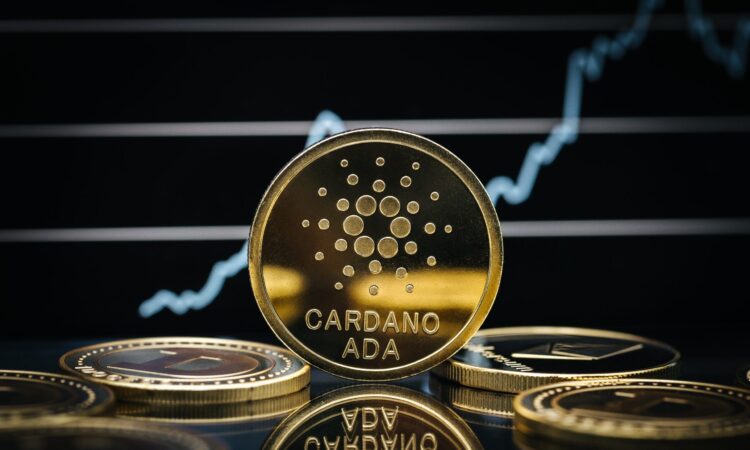
Table of Contents
Show more
Show less
The price of Cardano (ADA) has fluctuated in recent months, going from as low as £0.37 in January to as high as £0.61 in March – both of which are a far cry from its August 2021 peak of £2.07.
We’ve looked at some of the prevailing market forces (supply, demand, sentiment and competition) that might clue us in on how Cardano’s value could change in the near future.
No matter how thorough the analysis, cryptocurrency prices cannot be accurately predicted. Anyone who invests in crypto assets must be prepared to lose their entire investment.
Forbes Advisor has provided this content for educational purposes only and not to help you decide whether or not to invest in cryptocurrency. When investing in cryptocurrency or any other investment, always obtain appropriate financial advice.
What Is Cardano?
Cardano was conceived as a more secure, scalable and sustainable blockchain. The project was founded in 2014 and officially launched its native token ADA in 2017.
Cardano offers a platform for building smart contracts (like digital agreements) and creating decentralised applications while claiming to be more secure and efficient than competitors.
While Cardano was built to address the shortfalls of competitors like Ethereum, it has struggled to gain any significant level of adoption.
Now that Layer 2 blockchain solutions have arrived on Ethereum, significantly decreasing transaction costs and increasing confirmation speed, Cardano’s once-unique features are no longer a significant catalyst for adoption.
Cardano price
At the time of writing, Cardano traded at around £0.39. That was down by around 20% on the previous week and down 30% on the previous month, but up 5% on the same period last year.
How might Cardano perform in 2024?
This largely depends on four key factors: supply, demand, sentiment and competition. Here’s how the state of each currently stands:
Supply
ADA has a circulating supply of 35,247,104,181, which is 78% of the cryptocurrency’s total supply cap of 45 billion. At current rates, however, that means there’s still a significant amount of headroom left in Cardano’s supply, with no forthcoming constraints on its supply.
New Cardano (ADA) is issued every five days, and the amount issued decreases each time. However, it’s expected to take more than 100 years until the amount issued reduces to zero.
As such, the rate of supply does gradually fall over time, but assuming that the rate of demand for Cardano (ADA) remains relatively flat, there aren’t currently any additional pressures on supply that would cause prices to rise significantly.
Demand
The number of daily transactions can provide a gauge for the demand for a cryptocurrency, especially when placed in historical context. The more transactions that are being carried out, in theory, the more demand there is for that asset.
The current seven-day average number of daily transactions, according to Into The Block, is 57,000. That number is relatively flat over the past couple of years. Numbers haven’t been significantly higher than this since 2022. This could indicate there’s no great demand for ADA at the moment.
Google Trends search data, which tracks the popularity of user searches for given terms, shows searches for Cardano are down following a spike in early March. In general, interest has been flat since 2022. However, Google searches should not be taken as a conclusive indicator of interest in buying the asset.
The number of active Cardano addresses may also provide an indication of demand. There are currently just over 30,000 active addresses, which is roughly half the number of active addresses at this point last year, and at the same point last month. Again, however, this should not be taken as a conclusive indicator of interest in buying the asset.
Taken together, these factors could suggest there’s no particular pressure on the demand side so prices may not likely be pushed up.
Sentiment
The way people feel about cryptocurrencies can have a direct effect on their values.
Spectators have been fairly pessimistic about Cardano’s prospects, to the point that its founder Charles Hoskinson recently spoke out to defend the cryptocurrency.
Posting on X (formerly known as Twitter) on 7 April, the founder said: “Seeing all the dunking on Cardano makes me smile a bit. We are holding all the cards as an ecosystem. We have the best path for scalability, governance, and innovation. We also have the best community.”
Citing its forthcoming Chang and Ouroboros Leios updates, Hoskinson said: “I wouldn’t bet against an ecosystem with the ability to engage and unlock millions of people, has an on-chain sovereign wealth fund, and has never failed in 2300+ days of uptime 24/7.
“The problem with our industry is that we let short-term narratives and carnival barkers dominate the conversation. AI has the same issue. A few months ago, Open AI dominated everything, then Claude 3, now we got Grok 1.5, and soon Llama 3.
“The winners have foundations that are built to last generations and a community that respects and maintains those foundations.”
The statement failed to have any significant impact on the price of Cardano.
Finally, the widely cited Crypto Fear & Greed Index at alternative.me has had the crypto market in a state of “Extreme Greed”, which means speculators expect the market as a whole (including Cardano) to perform well in the near future.
Competition
The industry continues to debate Cardano’s long-term potential, with some supporters pointing to it as a more viable alternative to Solana (SOL), given its similarity and superior record on network uptime.
Conclusion
There’s nothing in the prevailing winds to suggest a bull run in Cardano’s future. But equally there is also no suggestion that it’s about to sink.
The current rising crypto tide that’s been partly caused by the ongoing fortunes of Bitcoin is raising many boats. Cardano may, for the time being, continue to ride the waves.






